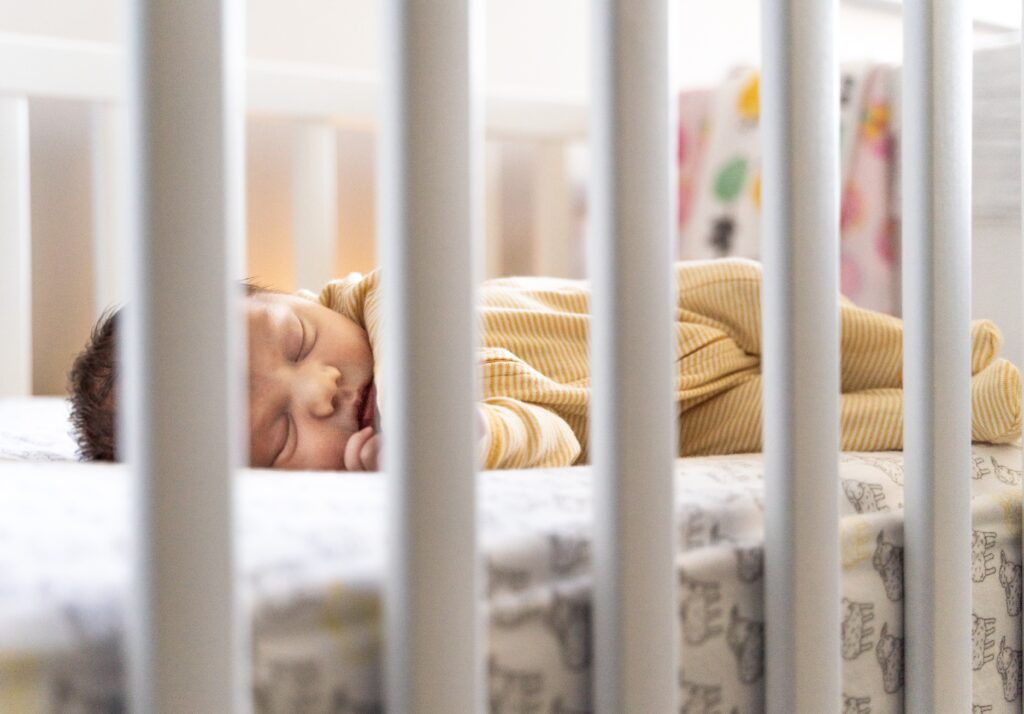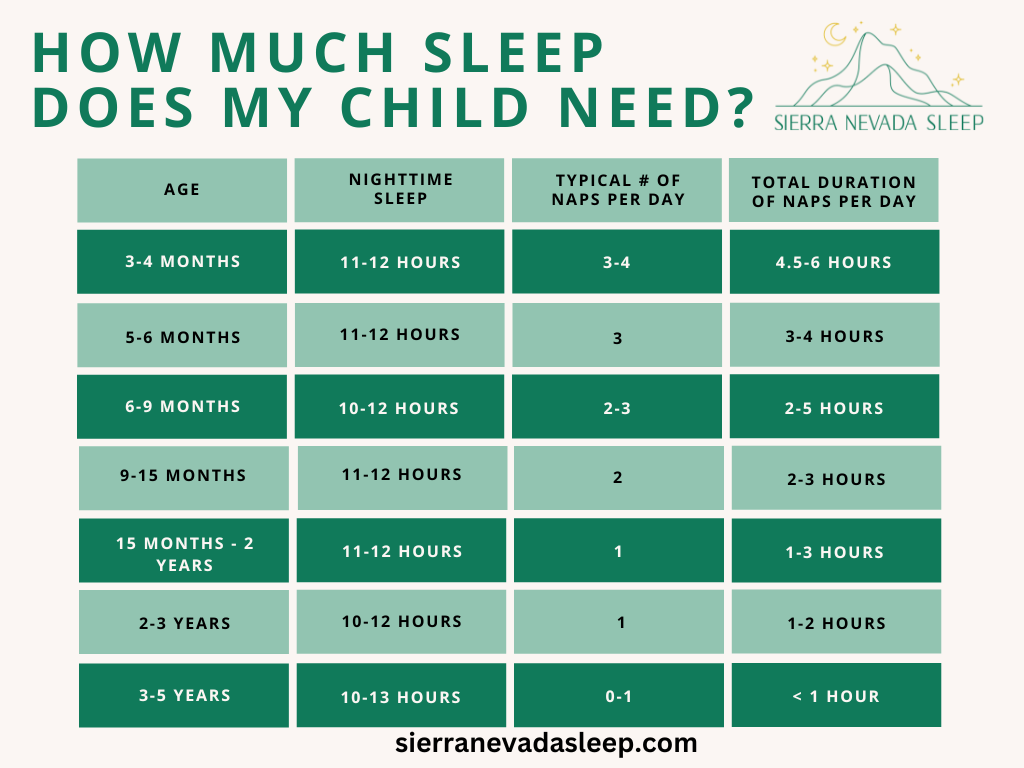How Much Sleep Does My Child Need?
March 7, 2023

Figuring out how much sleep your child needs is an important but somewhat complicated task. Today we’re going to look at how many hours of sleep are recommended for different age groups and signs of insufficient sleep.
The most important thing to know is that each child is going to be different and may not fall exactly in the recommended ranges. We want to make sure your child is getting enough sleep for him specifically. The best way to do this is to use the ranges below as a guide and then observe for signs of insufficient sleep which we’ll discuss below.
Sleep Duration In A 24 Hour Period By Age
Infants (3-11 months): 14-15 hours
Toddlers (1-3 years): 12-14 hours
Preschoolers (3-5 years): 11-13 hours
School Age Children (6-11 years): 10-11 hours
Remember, some children need more sleep than this while others need less. Below, we’ll look at naps.
Naps
For kids who are napping, parents often wonder – how many naps a day should my child be taking? Again, this is not a straightforward answer. We’ll consider how many naps children typically take at each age and the typical duration of total daytime and nighttime sleep.
Use the chart below to figure out how much nighttime sleep your child needs based on age. Then, take a look at the number of naps and typical daytime sleep needs.

A note about naps after age 3: Most children transition out of naps starting at age 3. At this age most children will nap some days and skip others. If your child no longer wants to nap, I recommend instituting a quiet time instead. This helps both the child and you take a break and feel refreshed for the remainder of the day ahead.
Looking at the above numbers can be a little complicated. If you’re struggling to figure out the duration of daytime vs nighttime sleep and the number of naps in a day for your child, I invite you to contact me. I can help you with this!
Signs Of Insufficient Sleep In Children
- Hyperactivity and impulsiveness.
- Poor mood regulation aka often seems upset and “moody.” Watch if your child’s mood or behavior is noticeably different following nights of increased sleep.
- Your child needs to be awakened in the morning and has a hard time getting going within 15 minutes.
- Your child sleeps at least 2 hours more per night on weekends or vacations than they do on school nights.
- For children who are no longer napping, your child falls asleep in school, during short daytime car rides, or at other inappropriate times (attending a sporting event, after school activities).
If you observe these signs, take a look at your child’s total sleep duration in a 24 hour period and try to make adjustments to increase their amount of sleep. Many of these signs of insufficient sleep are often considered normal and attributed to “kids being kids.” Sometimes they are incorrectly attributed to other problems like mood disorders or ADHD. If you have any doubt, please check with your child’s pediatrician.
My hope is that you now have a better understanding of how much sleep your child needs and can monitor for signs of insufficient sleep. I invite you to reach out to me if you have questions about whether your child is getting enough sleep or how to get them on an age-appropriate schedule.